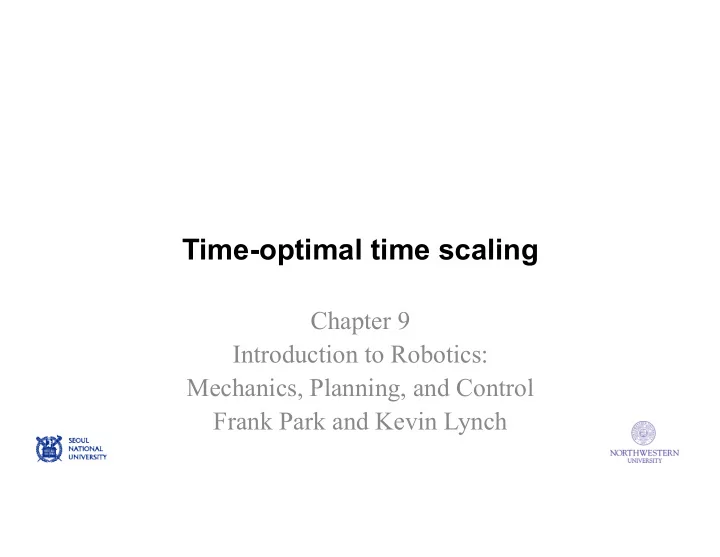

Time-optimal time scaling Chapter 9 Introduction to Robotics: Mechanics, Planning, and Control Frank Park and Kevin Lynch
Time-optimal time scaling of a path
Dynamics constrained to a path
Actuator torque/force limits
Acceleration limits
The problem statement
The phase plane ( s , ! s )
! s Maximize “speed” at all s while satisfying acceleration and boundary constraints
Time-optimal “bang-bang” time scaling
Time-scaling algorithm 1. Initialize empty list of switches S between U and L . 2. Integrate backward from end along L . 3. Integrate forward from start along U . If the curve crosses the final curve, switch U to L occurs there. Done. 4. If speed limit is exceeded, lower the speed at the penetration s until velocity limit not reached when integrating forward along U . Call the point just touching the speed limit B . 5. Integrate backward along L from B until intersecting the previous U motion segment. Switch to L occurs there. 6. Switch to U occurs at B . Set “start” to B , go to step 3.
Steps 2 and 3
Steps 4 and 5
Step 6, and back to step 3
Assumptions • Actuators are strong enough to hold static posture at all s • Single speed limit for all s • No zero-inertia points (zip) where one or more m i = 0 if isolated zips, or a “singular arc” of zips, then some actuator speed constraints come directly from 0 and others from L i ( s , ! s ) = U i ( s , ! s )
Zero-inertia point for actuator 2 at s = 1/2
Recommend
More recommend